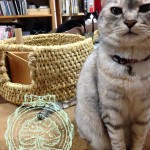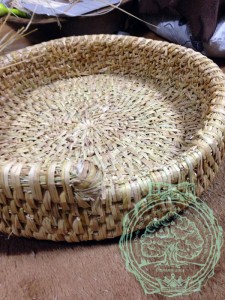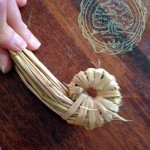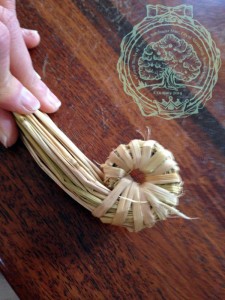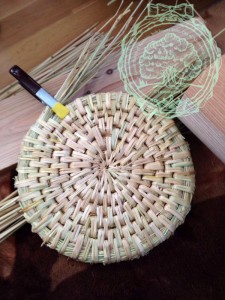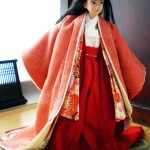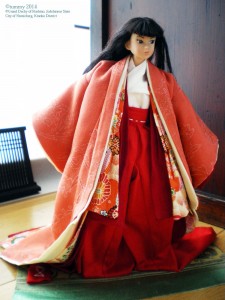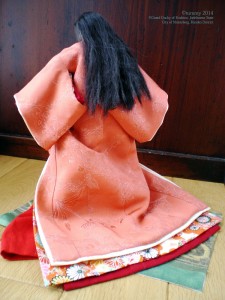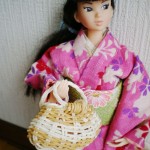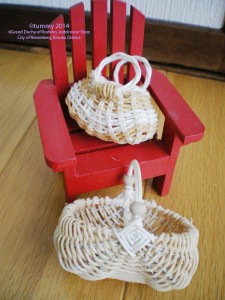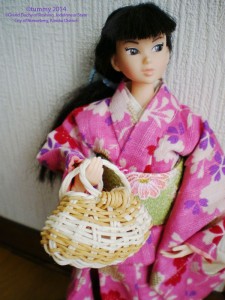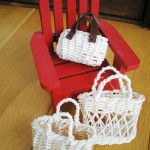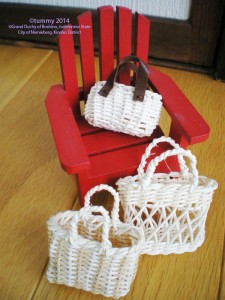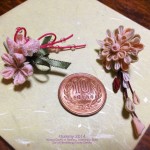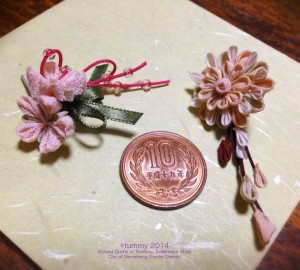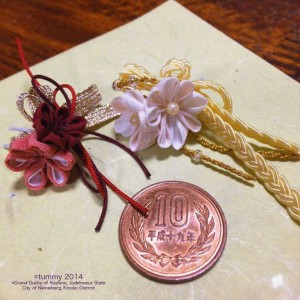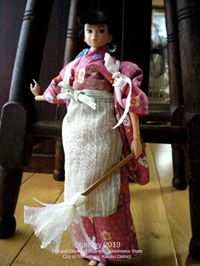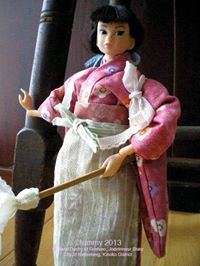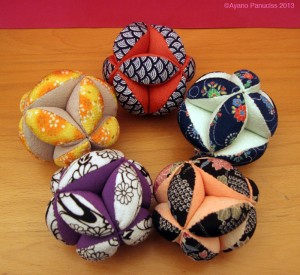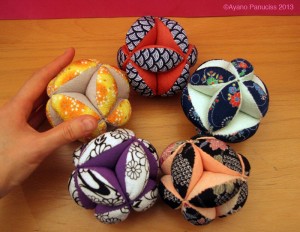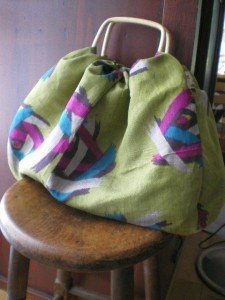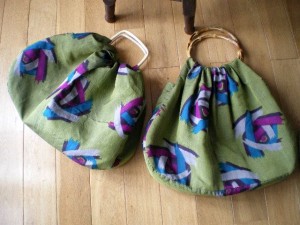Grand Duchy of Roshino, Jodelnneur State, City of Nienieberg, Kinoko District
ロシーノ大公国ヨーデルヌール州ニーニーベルグ市きのこ地区
Neko Chigura 2014 -1- 猫ちぐら1
新潟県では昔、農家でよく作られていたようです。
現在では、民芸品として人気があります。
底の部分の中心から、編み始めます。
“Neko Chigura” is a cat house made out of rice straws.
It was made mainly by the farmers in Niigata Prefecture in old days.
Today, it is popular as a folk art.
It starts weaving from the center of bottom.
Keep going until it reaches the size you want.
Tsumami-zaiku ornamental hairpins for dolls お人形のつまみかんざし
新年をお祝いするのにふさわしい、お人形のつまみ細工の簪を作りました。
To celebrate new year
I made some festive ornamental tsumami-zaiku hairpins (kanzashi) for dolls.
生地は主に羽二重、縮緬の古布を使っています。
Fabrics used: mainly habutae-shilk and vintage Japanese crepe clothes (chirimen).
Left: cherry blossoms.
Right: big chrysanthemum.
色が変わると、雰囲気が変わります。
Both are chrysanthemums.
Each color gives different type of impression.
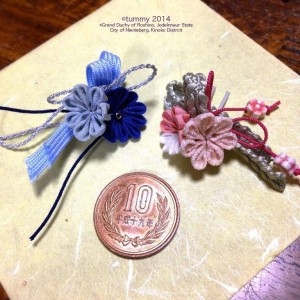 左は二重の花びらの菊、右は一重にビーズで花芯をつけてみました。
左は二重の花びらの菊、右は一重にビーズで花芯をつけてみました。
Left: a chrysanthemum with double-layered petals.
Right: a chrysanthemum with single-layered petal, and a bead in the center.
Clean the Whole House! 1 大掃除!1
そろそろ年末です。
日本では、年末に大掃除をします。
It’s close to the end of the year.
In Japan, we do this thorough cleaning at the end of the year
to welcome a new year.
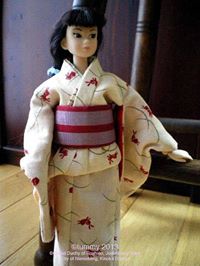 大掃除をするときには、このままでは動きにくい上、汚れてしまいます。
大掃除をするときには、このままでは動きにくい上、汚れてしまいます。
With kimono, it makes difficult to move and
moreover, easy to get dirty.
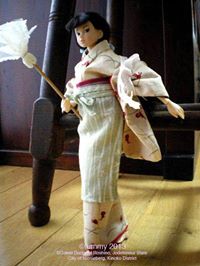 そこで、長い袖は「たすき」で邪魔にならないようにして、前掛けをつけます。
そこで、長い袖は「たすき」で邪魔にならないようにして、前掛けをつけます。
さあ、お掃除です!
Therefore, we tuck up kimono sleeves with tasuki (fabric cords)
so that they don’t bother your move
and wear an apron.
Now, let’s start cleaning!
Chirimen craft: Shippou-temari 七宝てまり
布選びが難しかったです。
I made these shippou-temari (seven-treasure balls)
with Japanese crepe cloths, chirimen.
It was difficult to choose fabrics.
これは今まで作ってきたちりめん細工の琴爪入れで作る
吊るし飾りの一番下に吊るす予定です。
As you can see, they are kind of large.
I will hang them at the bottom of tsurushikazari
which I have been working for a quite long time.
